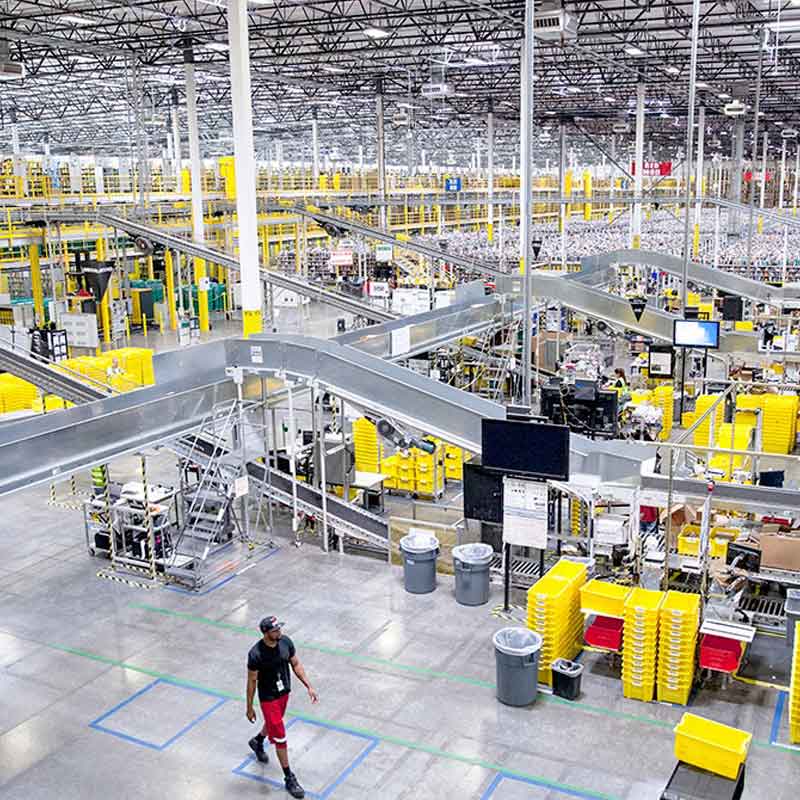A Backbone of International Logistics: Distribution Centers in Motion

Within today's interconnected world, speed and effectiveness of international shipping have emerged as crucial components of prosperous businesses. As consumers more and more expect quick delivery times, fulfillment centres have emerged as vital hubs that streamline the logistics process. These facilities are designed to handle the storage, packing, and shipping of products, enabling retailers to focus on their core operations while ensuring that orders reach customers promptly.
Fulfilment centres function as the foundation of global logistics, functioning as strategic points that enable companies to ship products across borders smoothly. By improving inventory management and utilizing advanced technology, these centres not only enhance operational efficiency but also improve customer satisfaction. As e-commerce continues to grow, grasping the role of fulfillment centres in international shipping is essential for businesses seeking to thrive in a competitive market.
Understanding Fulfilment Centres
Fulfilment centres play a pivotal role in the logistics chain by acting as hubs for the warehousing, packing, and delivery of products. These centres are carefully located to ensure rapid access to major trade areas, which greatly enhances the efficiency of global shipping. By centralizing inventory in various geographical locations, businesses can lower shipping times and costs, ultimately leading in improved customer satisfaction.
When an purchase is placed, fulfilment centres swiftly pick, pack, and ship the products directly to the customer or merchant. This streamlined process reduces delays and inaccuracies, as the incorporation of tech aids in inventory management and order tracking. Fulfillment centers utilize advanced systems to keep records of stock levels and forecast demand, ensuring that products are readily available and orders can be fulfilled in a timely manner.

Additionally, fulfillment centres often offer enhanced services such as custom packaging, return processing, and kitting. These services not only simplify the logistics process for companies but also enhance the overall customer experience. By outsourcing these operations to fulfilment centers, businesses can focus on core activities such as marketing and product development, while still meeting the growing demands of a worldwide marketplace.
The Importance of Tech in Fulfilment
Technology holds crucial position in the operational performance of fulfilment facilities. Advanced inventory control solutions enable immediate tracking of inventory quantities, ensuring that products are available when customers make orders. By utilizing cutting-edge software, fulfilment centres can optimize storage methods and diminish the time needed to pick and prepare items. This speed not only hastens the workflow but also minimizes errors, which boosts customer experience.
Automated processes is another important factor revolutionizing order fulfilment processes. Automated systems and conveyor belts streamline the transportation of products, allowing for fast sorting and packing. Automated guided vehicles transport items seamlessly within the distribution center, reducing the dependence on manual labor and speeding up overall capacity. This transition towards automation is crucial for order fulfilment hubs to meet the growing needs of e-commerce and global shipping.
Data analytics further improve the functionality of distribution centres by providing insights into consumer behavior and order trends. By analyzing such trends, facilities can forecast demand and modify their inventory amounts accordingly, minimizing the likelihood of overstocking or stockouts. Such data-driven decision-making enables fulfilment facilities to be anticipative in overseeing their operations, in the end leading to a more effective and responsive supply chain that caters to global shipping needs.
Challenges and Future Trends
As the international demand for rapid and effective shipping grows, fulfilment centres face several issues that can affect their operations. One significant hurdle is the increasing intricacy of international regulations and customs procedures. Fulfilment centres are required to navigate varying rules across various countries, requiring a deep understanding of regulatory requirements to avoid setbacks in shipments. Additionally, the ever-changing landscape of tariffs and trade agreements can further complicate logistics, making it crucial for these centres to stay informed and agile.
Another obstacle is the financial commitment required for technology and infrastructure to enhance operational efficiency. While automation and sophisticated software systems have the potential to significantly streamline processes, the upfront costs can be substantial. Fulfilment centres may find it difficult to balance the need for technological advancement with financial constraints. As rivalry intensifies, those that can effectively adopt and integrate new technologies will likely gain a competitive edge, while others may fall behind.
Looking to the future, sustainability will grow to be increasingly important for fulfilment centres as consumers and businesses alike focus on eco-friendly practices. This may involve adopting greener technologies, improving delivery routes to reduce environmental impact, and utilizing more eco-friendly packaging solutions. As fulfilment centre s evolve to meet these expectations, they will not only improve their operational efficiencies but also foster greater consumer trust and loyalty, ultimately shaping the future landscape of global logistics.
